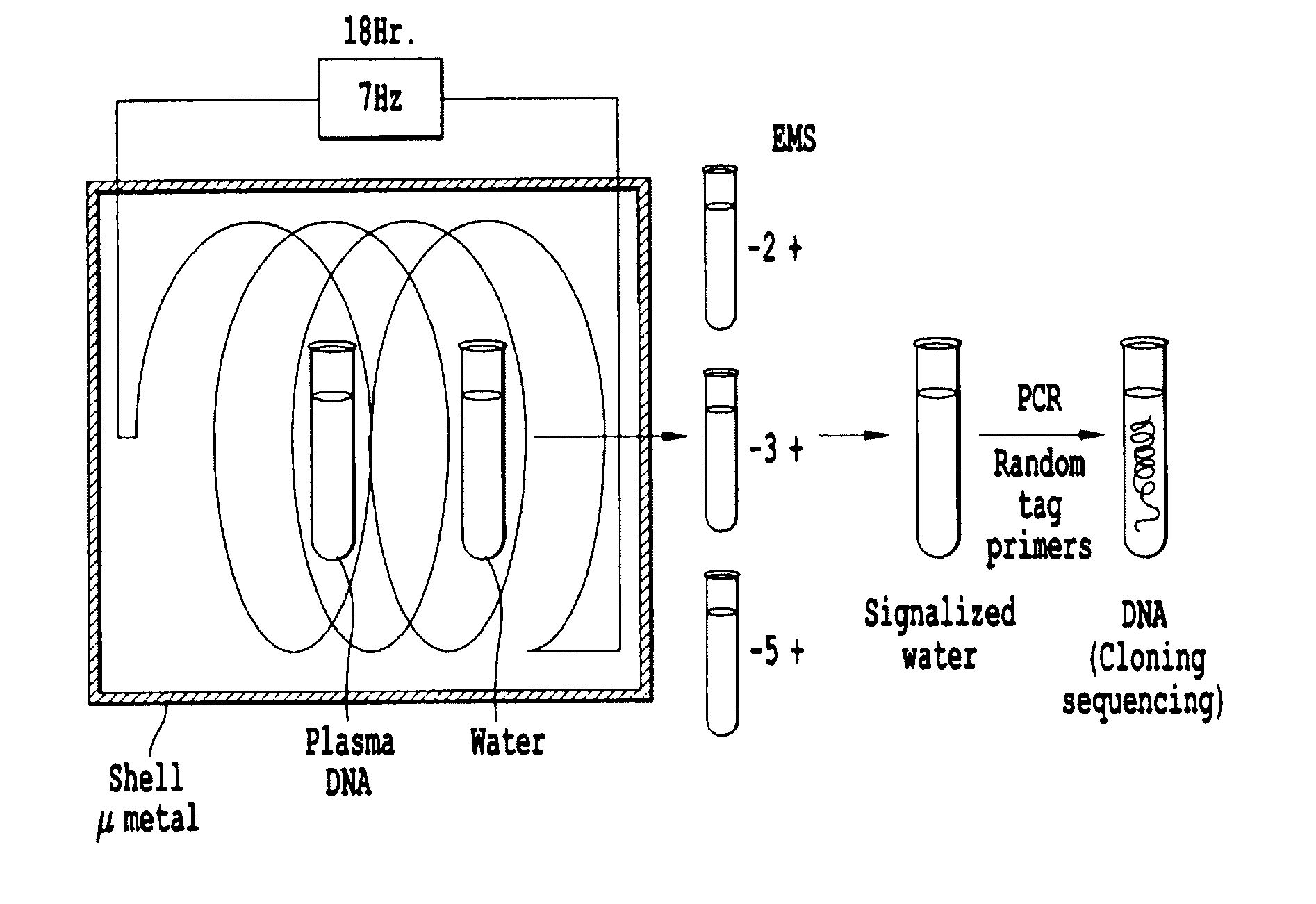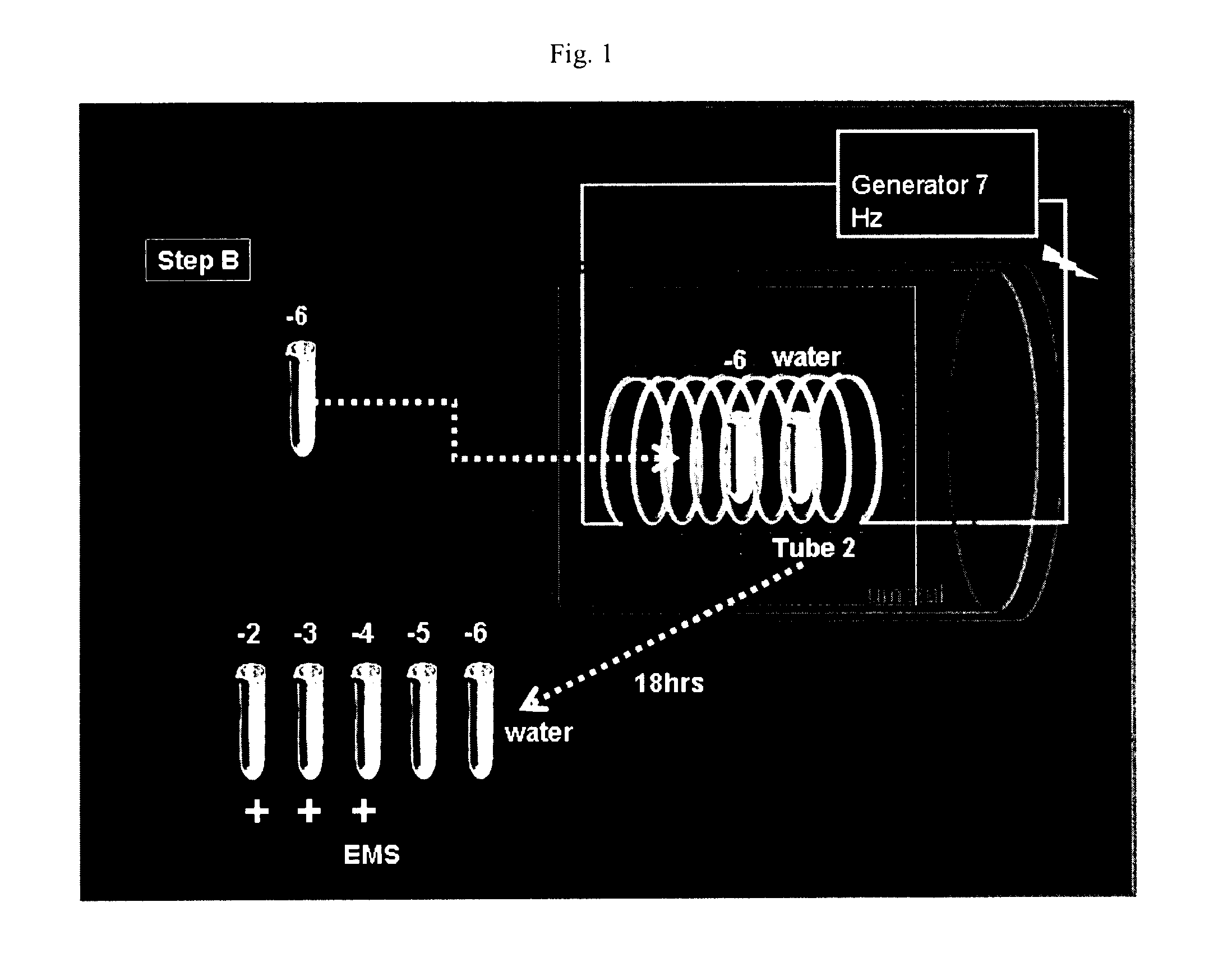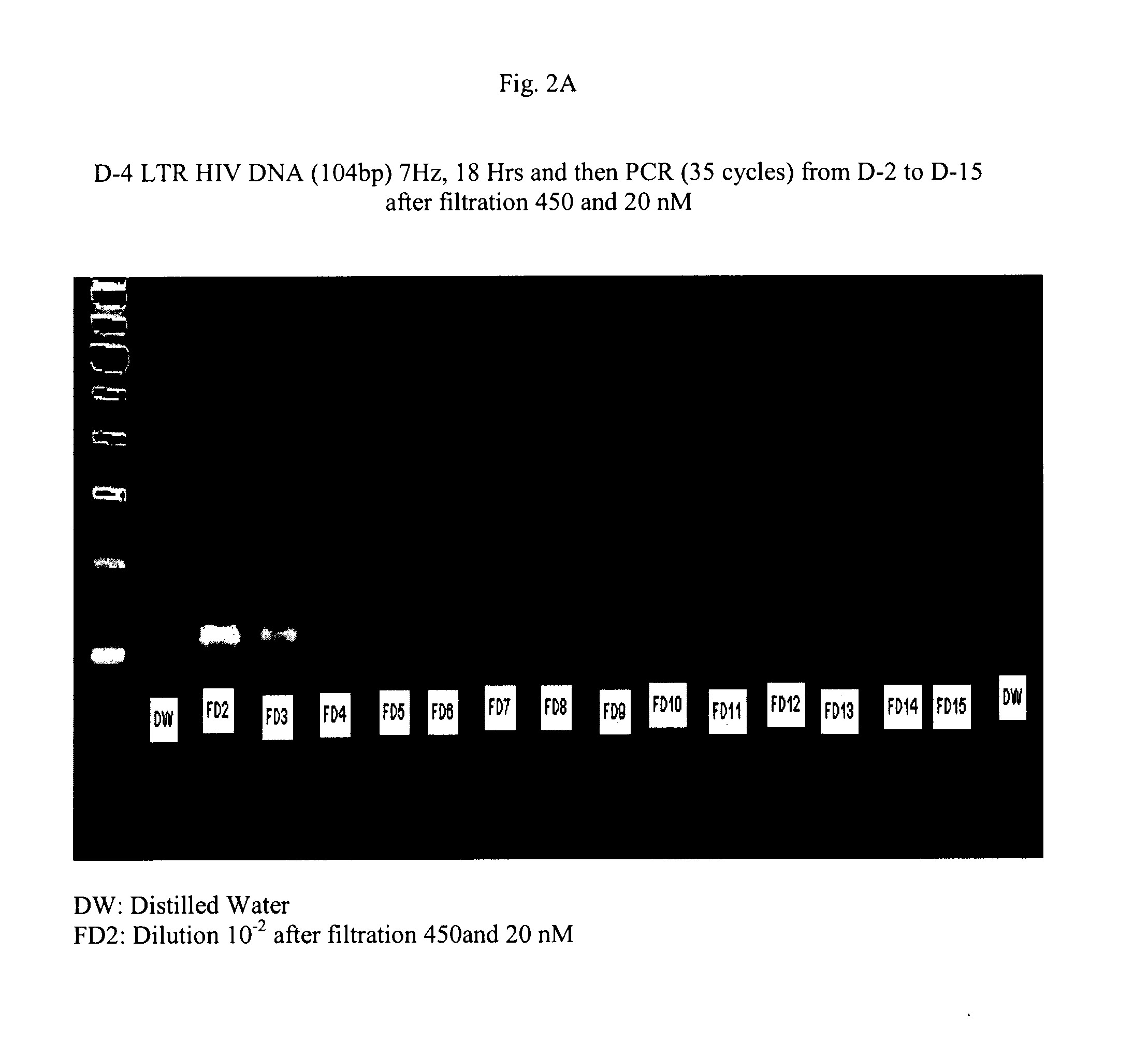General procedure for the identification of DNA sequences generating electromagnetic signals in biological fluids and tissues
a technology of electromagnetic signals and dna sequences, applied in the field of general procedures for the identification of dna sequences generating electromagnetic signals in biological fluids and tissues, can solve problems such as inability to identify
- Summary
- Abstract
- Description
- Claims
- Application Information
AI Technical Summary
Problems solved by technology
Method used
Image
Examples
example 1
Production of Samples Containing an EMS Signature Characteristic of HIV DNA
[0075]Step A:
[0076]Synthesis of DNA by PCR
[0077]A particular DNA sequence is first synthesized by polymerase chain reaction (PCR) on a DNA template, for example, a region of the LTR sequence present in the viral DNA extracted from the plasma of a HIV infected patient or obtained from a purified infectious DNA clone of HIV1 Lai, is amplified by PCR and nested PCR with respectively LTR-derived outer and inner primers.
[0078]Those were chosen to pick up some conserved regions of the LTR, given to several subtypes of HIV1. This amplified DNA was sequenced and found 100% identical to the known sequence of the prototype strain of HIV1 subtype B, HIV1 LAI (3). The resulting amplicon was determined to be 488 bp long and the nested-PCR amplicon to be 104 bp long.
[0079]Filtration and Dilution: A sample of each amplicon is prepared at a concentration of 2 ng / ml in a final volume of 1 ml of pure water that had been previo...
example 2
Identification of Unknown DNA Using Random Primers
[0109]Another aspect of the invention is directed to a general procedure for the identification of any unknown DNA sequence (or polynucleotide sequence) capable of producing EMS in biological fluids. The principle is shown by FIG. 3. The transmission of EMS in water allows the selective transmission of only the DNA sequences that were emitting the EMS under the induction conditions. The PCR method uses a combination of random and Tag primers. The random primer associated with the Tag has the following formula 5′-GGACTGACGAATTCCAGTGACTNNNNNNNN (SEQ ID NO: 1) in which are made all possible combinations of 8 nucleotides for the 4 possible bases (65,536). A detailed procedure is described below.
[0110]1) DNA is purified from EDTA-collected human plasma extracted by the kit, QiaAMP, (Qiagen).
[0111]2) The purified DNA samples are filtered through 0.45 and 0.1 μm filters and then diluted to FD2-FD15 for analysis of EMS. FD2 refers to a filte...
example 3
Recording and Transduction of EMS Signatures of HIV and Borrelia Burgdorferi
[0129]EMS signatures of HIV DNA and Borrelia DNA sequences are recorded and transduced as described below.
[0130]Step 1: Preparation of DNAs
[0131]1. A fragment of HIV DNA taken from its long terminal repeat (LTR) sequence present in the viral DNA extracted from the plasma of a HIV-infected patient or obtained from a purified infectious DNA clone of HIV1 Lai, is amplified by PCR (487 base pairs) and nested PCR (104 base pairs) using specific primers: TR InS 5′-GCCTGTACTGGGTCTCT (SEQ ID NO: 4) and LTR InAS 5′-AAGCACTCAAGGCAAGCTTTA (SEQ ID NO: 5). A longer variant (300 bp) is obtained using the following primer: 5′-TGTTAGAGTGGAGGTTTGACA (SEQ ID NO: 6) in conjunction with the above primer InAS.
[0132]2. A DNA sequence from Borrelia Burgdorferi, the agent of Lyme disease, is amplified by PCR (907 base pairs) and nested PCR (499 base pairs) with respectively Borrelia 16S outer and inner primers. Inner BORR16S inS 5...
PUM
| Property | Measurement | Unit |
|---|---|---|
| Frequency | aaaaa | aaaaa |
| Frequency | aaaaa | aaaaa |
| Volume | aaaaa | aaaaa |
Abstract
Description
Claims
Application Information
 Login to View More
Login to View More - R&D
- Intellectual Property
- Life Sciences
- Materials
- Tech Scout
- Unparalleled Data Quality
- Higher Quality Content
- 60% Fewer Hallucinations
Browse by: Latest US Patents, China's latest patents, Technical Efficacy Thesaurus, Application Domain, Technology Topic, Popular Technical Reports.
© 2025 PatSnap. All rights reserved.Legal|Privacy policy|Modern Slavery Act Transparency Statement|Sitemap|About US| Contact US: help@patsnap.com



